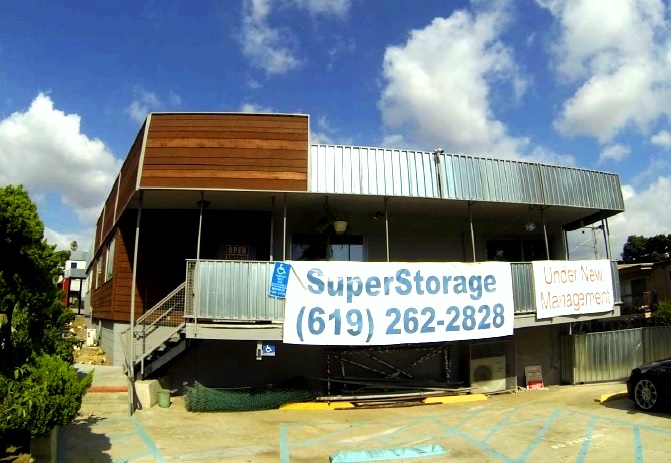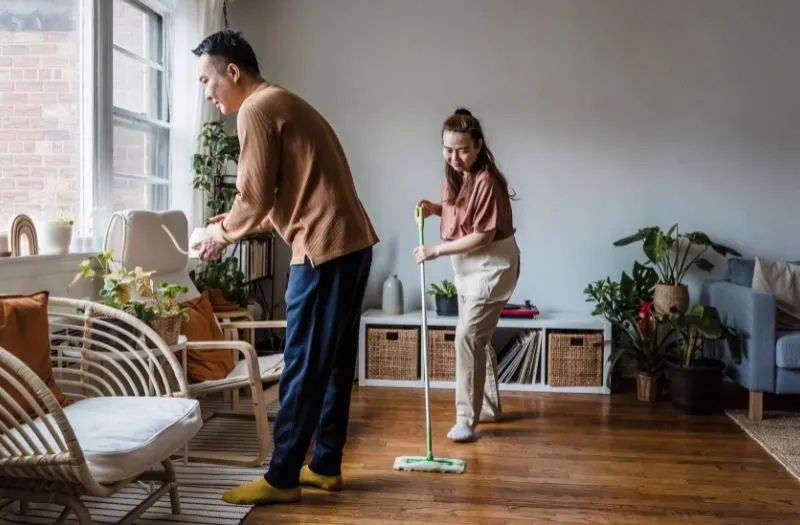The anticipation of a new baby brings forth a myriad of emotions, from excitement to a touch of nervousness. Amidst choosing the perfect onesies and adorable baby gear, there’s a fundamental task at hand – preparing your home for the newest family member.
In this guide, we will explore practical steps and heartfelt tips to transform your house into a cozy nest, ready to embrace the joy and warmth a newborn brings.
1. Organize and Declutter Each Room
Preparing your home for the arrival of a new baby involves more than just setting up a nursery. It’s about creating a well-organized, clutter-free space where your little one can thrive.
Here are some things to keep in mind to make sure your home is cozy and organized for your new baby:

Living Room
Declutter:
- Remove unnecessary furniture to create more open space.
- Store away or donate items you no longer use.
- Tackle cable clutter by using organizers or concealing them behind furniture.
Organize:
- Invest in storage baskets for toys and blankets.
- Arrange furniture to create a cozy and functional seating area.
- Consider a stylish yet practical diaper caddy for quick access to baby essentials.
Bedroom
Declutter:
- Clear out items that don’t belong in the bedroom.
- Simplify your wardrobe by donating clothes you no longer wear.
- Evaluate furniture placement for optimal space usage.
Organize:
- Invest in under-bed storage for extra linens or seasonal clothing.
- Use drawer dividers to keep baby clothes organized.
- Create a nursing station with essentials like a comfortable chair, a breastfeeding pillow, and a small side table.
Kitchen
Declutter:
- Clear out expired pantry items and condiments.
- Streamline kitchen tools and gadgets, keeping only the essentials.
- Create designated spaces for baby bottles, formula, and feeding accessories.
Organize:
- Install shelf dividers to maximize cabinet space.
- Use clear containers for easy identification of pantry items.
- Set up a feeding station with bibs, burp cloths, and sanitized bottles.
Bathroom
Declutter:
- Dispose of expired medications and toiletries.
- Keep only essential personal care items accessible.
- Minimize unnecessary decorations or items on countertops.
Organize:
- Install shelves or organizers inside cabinets for baby toiletries.
- Utilize baskets for organized storage of diapers, wipes, and bath essentials.
- Set up a diaper changing station with a waterproof pad and easy access to supplies.

Nursery
Declutter:
- Streamline baby clothes, keeping only what’s essential for the current season.
- Store away or donate toys that are not age-appropriate.
- Clear out unnecessary furniture to create a spacious and calming environment.
Organize:
- Invest in closet dividers to categorize baby clothes by size.
- Use open shelving for easy access to diapers, wipes, and changing essentials.
- Set up a designated area for baby books and soft toys.
2. Maximizing Space: The Benefits of Using a Self-Storage Unit in Your Baby-Ready Home
Welcoming a new baby into your home involves meticulous planning, organizing, and decluttering. As you prepare each room for the arrival of your little one, you may find yourself facing the challenge of limited space. You will probably just throw away or give away many things, but what about the rest?
And what if you want to start gathering all of your baby gear, such as baby carriers, walkers, and strollers, ahead of time? Or perhaps friends and family have already brought gifts that your child will only use in a few months?
This is where a self-storage unit can come to the rescue, offering a practical solution to maximize space and minimize stress in your baby-ready home.

Temporary Furniture Solutions
If you find yourself with excess furniture that you’re not ready to part with but doesn’t fit into your current living arrangements, a self-storage unit offers a temporary solution. This is especially useful if you’re planning to move to a larger space in the future or if you’re holding onto furniture for sentimental reasons.
Anticipating Future Needs
One significant benefit of a self-storage unit is its capacity to accommodate items that your baby will use in the future. Friends and family may have already showered you with gifts like baby carriers, walkers, and strollers designed for the later stages of your child’s development.
Instead of cluttering your home with these items that your newborn won’t immediately use, place them in a self-storage unit until the time is right.
Storing Sentimental Items
Often, there are sentimental items that you might want to keep for your baby’s future or pass on to them when they are older. These could include baby clothes, toys, or even furniture with sentimental value. A self-storage unit provides a secure and controlled environment to preserve these items without cluttering your everyday living spaces.
Preparing for Future Siblings
Babies grow quickly, and their needs change just as fast. If you plan on expanding your family, a self-storage unit can serve as a convenient space to store baby items that can be reused for future siblings. This not only saves you from repurchasing items but also allows you to maintain an organized home environment.

3. Create Designated Zones
Setting up essential stations around your home is a game-changer. These dedicated areas ensure you have everything you need so you can streamline your daily routine.
Diaper Changing Zone
Create a dedicated space for diaper changes to simplify this frequent task. Whether it’s a changing table in the nursery or a portable changing pad in the living room, ensure you have all the essentials nearby – diapers, wipes, diaper rash cream, and a change of clothes.
Feeding and Nursing Zone
Designate a comfortable corner for feeding and nursing sessions. This could be a cozy chair in the nursery or a designated spot in the living room. Keep nursing pillows, burp cloths, and a water bottle within arm’s reach. If you’re bottle-feeding, organize baby bottles, formula, and sterilizing equipment in this zone to streamline the process.
Play and Activity Zone
Set up an area for play and tummy time where your baby can explore and engage with age-appropriate toys. Use soft play mats and store toys in designated bins or baskets for easy access. Rotate toys regularly to keep things interesting for your little one. This zone encourages sensory development and playtime exploration.

4. Start Babyproofing Early
Babyproofing is a crucial step, and it’s never too early to begin. Start with high-priority zones like wall outlets, shelves, tables, and sharp objects.
Childproofing Tips
- Install babyproof locks on kitchen cabinets to keep harmful items out of reach.
- Use non-slip pads under rugs in the living room.
- Secure stairs with gates at the top and bottom.
- Keep exterior doors locked, and consider avoiding long curtains with cords.
5. Conclusion: Nurturing Your Baby, Nurturing Your Home
Preparing for your new arrival involves more than just baby-proofing and setting up a nursery. It’s about creating a space that’s both functional and filled with warmth.
As you organize each room, consider the benefits of a self-storage unit for items not immediately needed. Maximize space, minimize stress, and embark on this exciting journey with a home that’s ready to welcome and nurture your little one.

If you’re looking for a storage facility to store your belongings, SuperStorage San Diego has got you covered in this department. Here at SuperStorage San Diego, we offer a wide range of unit selections and top-notch security. To learn more about our self-storage facility, please check out our website at https://superstoragesandiego.com/.
